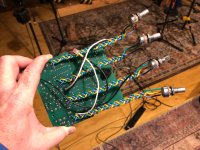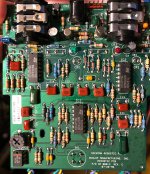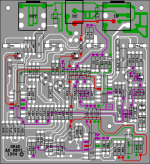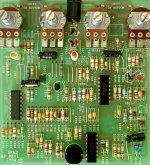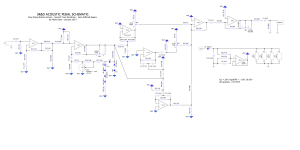Caldo71
Active member
Hey folks,
So if any of you recognize me and my posts from the last couple years, you my know that "my deal" has usually been figuring out ways to house pedalpcb stuff into rack-mountable enclosures. Any pedal I love goes into my rack alongside its' peers in a big rack enclosure, and is controlled by a Vodoo Labs HEX loop switching system and their accompanying floorboard. As such, I wire up these pedals as "always on" in the manner that you guys educated me on from day one.
The newest addition to that family is NOT a pedalpcb build, but an ancient Rockman Acoustic Guitar Simulator pedal that I bought used on Reverb. As such, I don't have the chops to recognize how to do that same "always on" situation on this little guy: it's on/off switch is one of those "soft touch" buttons, which has four contact points on its' reverse side—see pics below...


...I don't even know what that style of on/off switching component with only four contact points is called, actually.
I'm assuming that it's probably as simple as jumpering two of the four points on the PCB once I desolder that switch, but I just don't know which points to jumper specifically, since I don't know how those four-lead switches make the connection.
Can anyone help me out with this one? THANKS in advance....
So if any of you recognize me and my posts from the last couple years, you my know that "my deal" has usually been figuring out ways to house pedalpcb stuff into rack-mountable enclosures. Any pedal I love goes into my rack alongside its' peers in a big rack enclosure, and is controlled by a Vodoo Labs HEX loop switching system and their accompanying floorboard. As such, I wire up these pedals as "always on" in the manner that you guys educated me on from day one.
The newest addition to that family is NOT a pedalpcb build, but an ancient Rockman Acoustic Guitar Simulator pedal that I bought used on Reverb. As such, I don't have the chops to recognize how to do that same "always on" situation on this little guy: it's on/off switch is one of those "soft touch" buttons, which has four contact points on its' reverse side—see pics below...
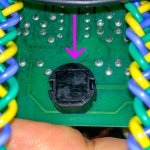
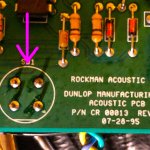
...I don't even know what that style of on/off switching component with only four contact points is called, actually.
I'm assuming that it's probably as simple as jumpering two of the four points on the PCB once I desolder that switch, but I just don't know which points to jumper specifically, since I don't know how those four-lead switches make the connection.
Can anyone help me out with this one? THANKS in advance....

